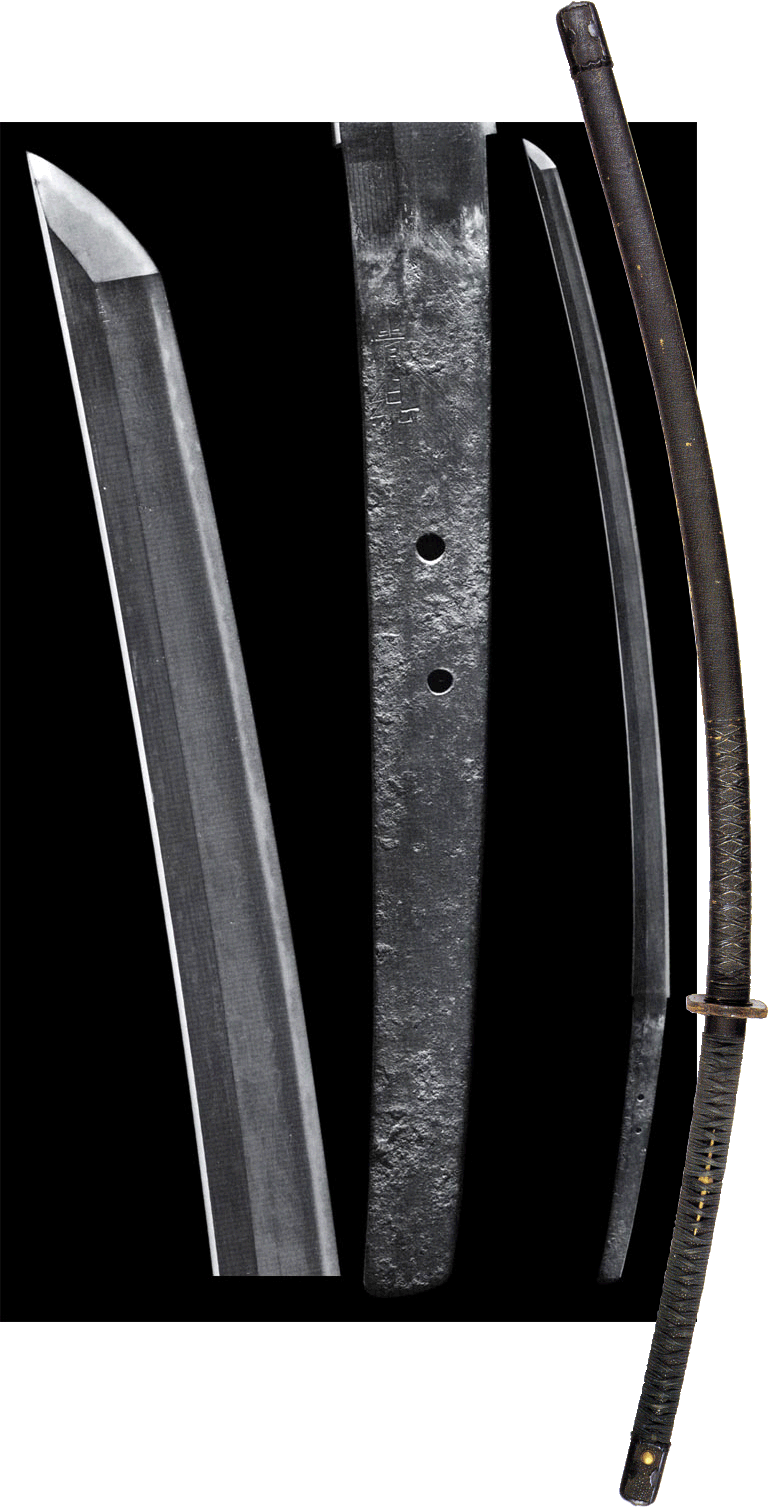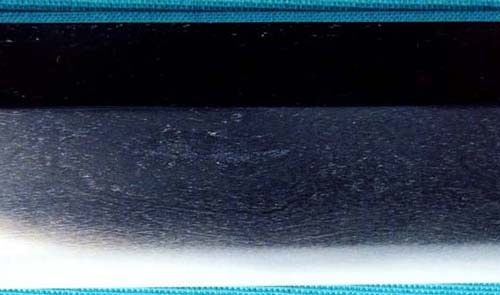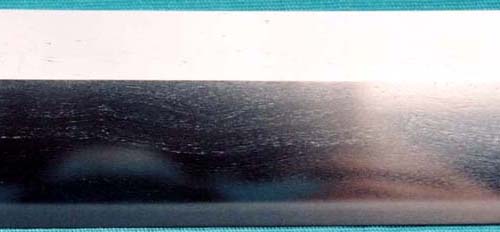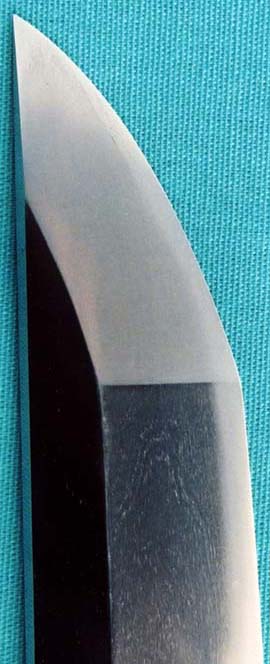Kamakura
Suwo Tachi
Nagasa:
69.2cm
Sori:
1.3cm
Moto-haba:
2.8cm
Saki-haba:
1.9cm
Kissaki:
2.2cm
Nakago:
18.9cm
Nakago-zori: 0.2cm
This
sword shows Itame Mokume mix with Ji-Nie
where Masame is laid for the Habuchi.
Yamato-style Hoso-Suguha then has many
Ko-Ashiiri and Ko-Nie, and the Boshi is
Hakikake. These markers are found only
prior to the Nambokucho Nio.
Shinogi-zukuri,
Ihori-mune. Mi-haba and Kasane are
normal while Shinogi is raised Taka.
Sori is shallow, with elongated
Chu-Kissaki.
O-Itame
Hada and Mokume Hada mixes and steams
along the Ha. O-Hada stands strongly in
various places. Ji-Nie Tsuki and Chikei
are strung through. Steel is dark.
Hoso-Suguha
has Ko Ashi-iri. Hotsure appears
throughout the Habuchi. Tight Nioi-Guchi
shows fine Ko-Nie.
Hakikake
pours through a Sugu Boshi.
O-Suriage
Nakago is Kiri-Jiri. Yasuri Hira-Ji,
common-ground, KatteSagari where Taka-Ji
is Kiri-Yasuri. There is excellent color
and aging.
Two
Mekugi-ana, O-Suriage-Mumei.
|







